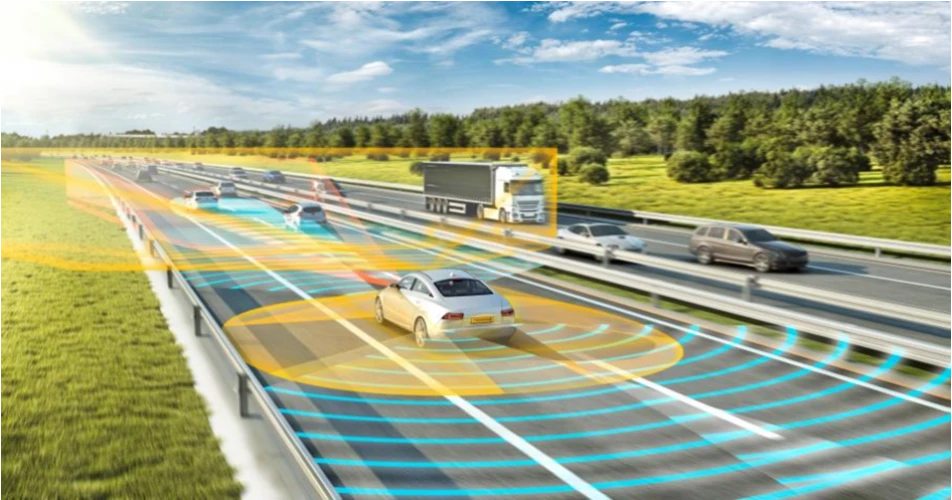Advanced Driver Assistance Systems (ADAS) are in operation, in some respect, on most modern vehicles now on the roads. Seamus, from Ryans Automotive, outlines some of the fundamental aspects of these systems and why you, if you don’t already know, need to get to grips with these crucial vehicle systems.
System Components The various components of ADAS include cameras, radar sensors, lidar sensors, ultrasonic sensors, control modules, and actuators. It is imperative to understand how these components interact and function as a system.
Sensor and System Calibration ADAS systems rely on accurate sensor data to operate correctly. Workshops need to know how to properly calibrate the sensors, to ensure precise measurements and reliable system performance. This may involve using specialized calibration tools, targets and procedures, as determined by the vehicle manufacturer.
There are static, as well as dynamic calibration procedures. Static calibration is done in the garage, with the manufacturer’s required target devices and related equipment. Dynamic calibration is conducted while driving, and can only occur when the required road, lane marking, lighting and sometimes other conditions are met. Some cars require both static and dynamic calibration.
System Operation Workshops should understand how different ADAS features work. These systems include adaptive cruise control (ACC), lane keeping assist (LKA), collision warning (CAS or FCW), automatic emergency braking (AEB), blind spot monitoring (BSM), and parking assist (PA). They should know the principles behind these features and how they interact with the vehicle’s controls and driver inputs.
Diagnostic Procedures When ADAS malfunctions or generates error codes, workshops must diagnose and troubleshoot the system accurately. This involves using diagnostic tools and software to retrieve error codes, perform system checks, and pinpoint the root cause of the issue. Workshops should also be aware of any technical service bulletins or manufacturer-specific procedures related to ADAS troubleshooting.
Repair and Maintenance Workshops should understand the repair and maintenance requirements specific to ADAS components. They should know how to safely handle, replace, or repair sensors, control modules, and actuators. Additionally, as this is important to your customers, they should follow proper procedures to ensure that ADAS functionalities are restored after repairs or component replacements.
When to Calibrate An ADAS system needs to be calibrated for any of these situations:
When replacing faulty ADAS components
When any ADAS system is not working correctly
If ADAS cameras or radar units had to be removed, to gain access to other components
If distance measurement to the car ahead is incorrect
ADAS will also have to be calibrated after a 4 wheel alignment, repairs to air suspension or vehicle levelling systems, or any other work that changes the suspension geometry.
An example of work without recalibration causing problems is camera alignment. If the camera is looking too low, it may not see another car or person and fail to apply emergency braking. If the camera is looking too high, an overpass may cause emergency braking to be applied as the car thinks it will hit the overpass.
Safety Considerations ADAS systems play a critical role in vehicle safety. Workshops should be aware of the potential risks associated with working on ADAS-equipped vehicles. They need to take precautions to prevent accidental sensor misalignment, damage, or unintended system activations during repairs. Safety procedures may include disabling the system, using protective covers, or following specific guidelines provided by the manufacturer.
It’s important to note that ADAS technology is constantly evolving, and workshops should try to stay updated on the latest advancements, training, and technical information provided by vehicle manufacturers, to ensure they have the necessary knowledge to work on ADAS-equipped vehicles effectively.
ADAS Solutions Calibrating and diagnosing ADAS is a skill that every garage should master. As ADAS features creep into more and more models and systems, it is soon, if not already, impossible to ignore. As ADAS has been on many Makes and Models for many years, the costs of the equipment has come down, making ADAS skills and equipment a necessary part of every working garage.
To meet the equipment and training needs of workshops, Seamus Ryan at Ryans Automotive has solutions that are ideal for all garages, whether they are just starting with ADAS or are looking to expand coverage and capabilities.
For more information, ring Ryans Automotive on 051-424-799 or view their range of ADAS equipment on ryansautomotive.ie. To read more of this technical article or download the entire article click
here. There are lots more Tech Tips to view, and they are all searchable, on
TechTips.ie.
 Seamus Ryan, Ryans Automotive, outlines some of the fundamental aspects of ADAS and why you need to get to grips with these crucial vehicle systems
Seamus Ryan, Ryans Automotive, outlines some of the fundamental aspects of ADAS and why you need to get to grips with these crucial vehicle systems